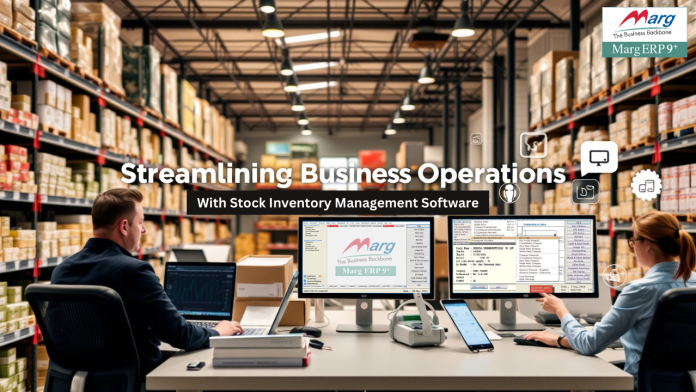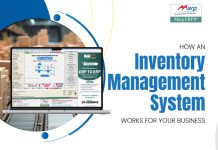In today’s fast-paced business environment, managing inventory efficiently is no longer a luxury but a necessity. Whether you run a small retail store or oversee a large-scale manufacturing unit, keeping track of your stock levels, ensuring timely replenishment, and avoiding overstocking or understocking is critical to maintaining profitability. This is where stock inventory management software comes into play.
The Growing Need for Stock Maintain Software
The traditional pen-and-paper method of tracking inventory is not only time-consuming but also prone to errors. Manual processes often lead to discrepancies in stock counts, missed reorder opportunities, and even lost sales due to out-of-stock situations. With businesses expanding rapidly and customer expectations rising, companies need smarter solutions to stay competitive.
Enter stock maintenance software —a digital solution designed to automate and streamline inventory-related tasks. These tools provide real-time insights into stock levels, help manage multiple warehouses, track product movement, and generate detailed reports. By adopting such software, businesses can reduce operational inefficiencies, save time, and focus on growth strategies rather than firefighting inventory issues.
What Is Inventory Management Software?
At its core, inventory management software is a system that helps businesses monitor, control, and optimize their inventory. It allows users to track products from procurement to sale, ensuring that every item is accounted for at all times. Modern systems come equipped with advanced features like barcode scanning, automated reordering, and integration with other business tools like accounting and e-commerce platforms.
While many paid options are available, there are also inventory management software free versions that cater to small businesses with limited budgets. These free tools may lack some advanced functionalities but still offer essential features to get started with efficient stock management.
Key Features of Stock Management Software
When evaluating stock management software, it’s important to understand the key features that make these tools indispensable for modern businesses:
- Real-Time Stock Tracking One of the most significant advantages of using stock management software is the ability to monitor inventory levels in real-time. This ensures that you always know what’s in stock, what needs restocking, and what might be sitting idle.
- Automated Reordering: Running out of popular items can cost you sales while overstocking ties up capital unnecessarily. Automated reordering systems analyze sales trends and trigger purchase orders when the stock falls below predefined thresholds.
- Multi-Location Support: For businesses operating across multiple locations, having centralized visibility into all warehouses or stores is crucial. Stock inventory management systems allow you to manage inventories across different sites seamlessly.
- Barcode Scanning and RFID Integration Advanced software supports barcode scanners and RFID tags, making it easier to track individual items quickly and accurately.
- Reporting and Analytics: Detailed reports provide insights into sales patterns, stock turnover rates, and supplier performance. These analytics help in making informed decisions about pricing, promotions, and procurement.
- Integration Capabilities: Many stock inventory management systems integrate with third-party applications such as CRM, ERP, and e-commerce platforms, creating a unified ecosystem for seamless data flow.
- User-Friendly Interface A good stock maintenance software should have an intuitive interface that makes it easy for employees to use without extensive training.
- Security and Data Backup: Protecting sensitive information and ensuring data integrity is vital. Reliable software offers robust security measures and automatic backups to prevent the loss of critical data.
Why Choose the Best Stock Management Software?
With so many options available in the market, choosing the right tool can be overwhelming. However, investing in the best stock management software tailored to your specific needs can yield substantial returns. Here’s why:
Improved Accuracy
Manual inventory tracking often leads to human errors, which can snowball into bigger problems down the line. Automated systems eliminate guesswork by providing precise data, reducing discrepancies, and improving overall accuracy.
Cost Savings
Efficient inventory management reduces costs associated with overstocking, spoilage, and obsolescence. Additionally, automating repetitive tasks frees up staff to focus on more value-added activities.
Enhanced Customer Satisfaction
Nothing frustrates customers more than finding out that a desired product is out of stock. With accurate stock tracking and timely reorders, businesses can ensure consistent availability of products, enhancing customer satisfaction and loyalty.
Scalability
As your business grows, so does the complexity of managing inventory. The best stock management software scales with your business, accommodating increased transaction volumes, additional locations, and new product lines without compromising performance.
Competitive Edge
Businesses that leverage technology gain a competitive edge over those relying on outdated methods. Streamlined operations, faster response times, and better decision-making give tech-savvy organizations an advantage in today’s dynamic marketplace.
How to Select the Right Stock Inventory Management System
Choosing the perfect stock inventory management system requires careful consideration of several factors:
- Budget: Determine how much you’re willing to spend. While premium solutions offer extensive features, free or low-cost alternatives can suffice for startups and small businesses.
- Scalability: Ensure the software can grow with your business. Look for flexible plans that allow adding users, locations, or modules as needed.
- Ease of Use: Opt for user-friendly software that doesn’t require extensive training. An intuitive interface will encourage adoption among team members.
- Customization Options Every business has unique requirements. Choose software that lets you customize workflows, reports, and dashboards to suit your specific needs.
- Customer Support: Reliable technical support is essential, especially during the implementation and troubleshooting phases. Check if the provider offers timely assistance through various channels like chat, email, or phone.
- Trial Periods/Demos: Before committing, take advantage of free trials or demos to test the software’s functionality and compatibility with your existing systems.
Free vs Paid Inventory Management Software
For businesses just starting or operating on tight budgets, inventory management software free versions can be a great starting point. These tools typically include basic features like stock tracking, order management, and simple reporting. However, they may lack advanced capabilities such as multi-location support, integrations, or priority customer support.
On the other hand, paid solutions offer comprehensive features and greater flexibility. They are ideal for medium to large enterprises looking to scale efficiently. While the initial investment may seem high, the long-term benefits—such as reduced labor costs, improved efficiency, and enhanced decision-making—often justify the expense.
Ultimately, the choice between free and paid software depends on your business size, budget, and specific requirements. It’s worth noting that some providers offer tiered pricing models, allowing you to upgrade as your needs evolve.
Real-Life Benefits of Using Stock Maintenance Software
Let’s look at some practical examples of how businesses benefit from implementing stock maintenance software:
- Retail Stores Retailers use these tools to keep shelves stocked with popular items, avoid overordering slow-moving products, and analyze seasonal demand patterns.
- E-Commerce Businesses: Online sellers rely on inventory management systems to synchronize stock levels across multiple sales channels (e.g., websites, marketplaces) and prevent overselling.
- Manufacturing Units: Manufacturers utilize these systems to track raw materials, monitor work-in-progress, and optimize finished goods storage.
- Wholesale Distributors Distributors depend on stock inventory management software to handle bulk orders, manage warehouse logistics, and streamline shipping processes.
Regardless of the industry, the common thread is improved efficiency, reduced waste, and higher profitability—all thanks to smart software solutions.
Tips for Maximizing the Value of Your Stock Inventory Management Software
Once you’ve implemented stock inventory management software, here are a few tips to maximize its potential:
- Train Your Team: Ensure everyone who interacts with the system receives adequate training. Familiarity breeds confidence and minimizes resistance to change.
- Regular Audits: Conduct periodic physical audits to verify that the software’s records match actual stock levels. This helps identify discrepancies early and maintain data accuracy.
- Leverage Analytics Use the reporting features to uncover trends, forecast demand, and refine your inventory strategy.
- Stay Updated: Keep the software updated to access the latest features and security patches. Outdated versions may expose your business to vulnerabilities.
- Integrate with Other Tools Connect your inventory management system with complementary tools like accounting software, POS systems, and CRM platforms to create a cohesive workflow.
Conclusion
Stock inventory management software is no longer optional—it’s essential for any business serious about optimizing its operations and staying ahead of the competition. The benefits are undeniable from real-time tracking and automation to scalability and cost savings. Whether you opt for a free version to dip your toes in or invest in a premium solution for advanced capabilities, the right software can transform the way you manage inventory.
By embracing technology and leveraging the power of stock maintenance software, businesses can achieve greater efficiency, accuracy, and profitability. So, take the first step today—evaluate your needs, explore your options, and find the perfect tool to elevate your inventory management game. After all, success lies in the details—and managing your stock effectively is one detail you can’t afford to overlook.
Read more useful blogs:-
- The Importance of Distributor Management Systems in Modern Distribution Businesses
- Streamlining Business Operations with Stock Inventory Management Software
- Streamline Your Jewellery Business with the Right ERP Solutions
- How Accounting Software Simplifies GST and Follows the Golden Rules of Accounting
- Exploring Different Types of Billing and the Software for Distributors




















